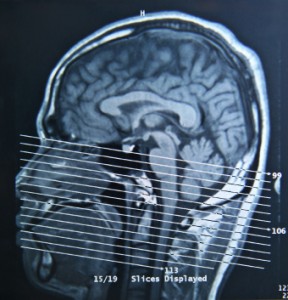Football Brain Injuries
It is hard to believe that professional football players did not, at one time, wear helmets. Then it became the aviator looking leather cap and finally morphed into the technologically space age piece of equipment used today. However, football brain injuries seem to be a major concern regardless of the alleged safety of the equipment. So much so, in fact, that it has even been discussed in Congressional hearings.
Concussion
Most people do not realize what a concussion is. It is assumed that it is a bruise from hitting a hard surface when in reality it is a cellular response to the brain being rapidly accelerated and then stopped or spun out of control. As a result, the cells become depolarized which basically means they get confused and start randomly firing numbing receptor chemicals throughout the brain. This reaction primarily affects memory and learning capability causing symptoms that include blurred vision, nausea, confusion and sometimes unconsciousness. Neurologists concur that once you suffer a concussion it is easier to sustain a second one or more with a longer recovery time due to the weakness caused by the first.
 Suicide
Suicide
Experiencing one to several concussions in a short period of time, common amongst NFL players, has currently been under fire due to the startling effects. According to a 2000 study of 1,090 former NFL players found that 60% suffered at least one concussion and 26% more than one during their career. In 2007, the University of North Carolina’s Center for the Study of Retired Athletes reported that 20.2% of 595 former players interviewed admitted suffering from depression. This surpasses players that have not sustained a concussion by three times the normal average. Case in point: Three former players have committed suicide due to alleged claims of concussion induced depression shortly after one another. They were Chicago Bears player David Duerson, 50 (who shot himself in the chest after alerting his family to have his brain examined); San Diego’s Juinior Seau, 43 (also shot himself in the chest) and Atlanta Falcon’s Ray Easterling, 62.
What’s Being Done?
Due to the highly successful financial results of professional football, no one wants to challenge or change the game and threaten the money train. This is one reason the issue has made it all the way to Congress. In 2009, the NFL created an overhaul of how to deal with concussions on site removing from the game those that failed preliminary on field testing after suffering a serious head hit and in 2010 implemented a visual ad campaign geared toward players using target words such as ‘depression’ and ‘early onset dementia’. Many feel this is not enough and that strict changes in helmet standards, which haven’t changed since 1973, be re-evaluated along with possible rule changes such as eliminating kickoff returns.
The phenomenon of football head injuries is no surprise behind closed doors. Football players as well as similar athletes such as professional boxers have been struggling with this risk for many years. Hopefully, the game will be able to continue along with the necessary safety of its players.
